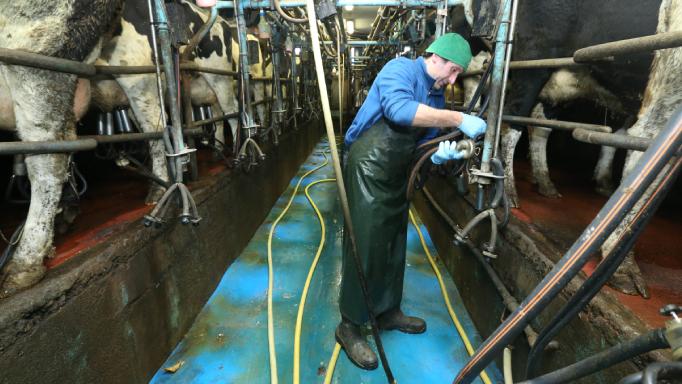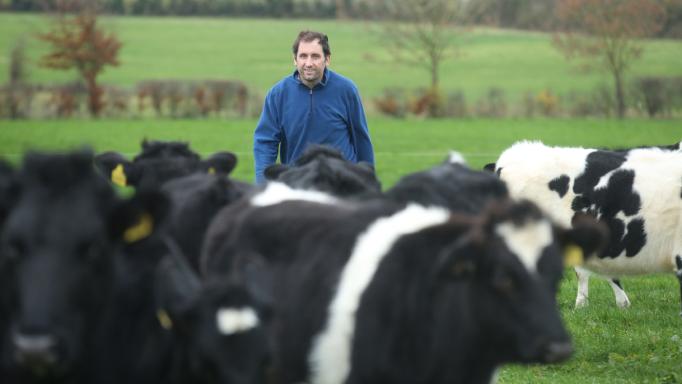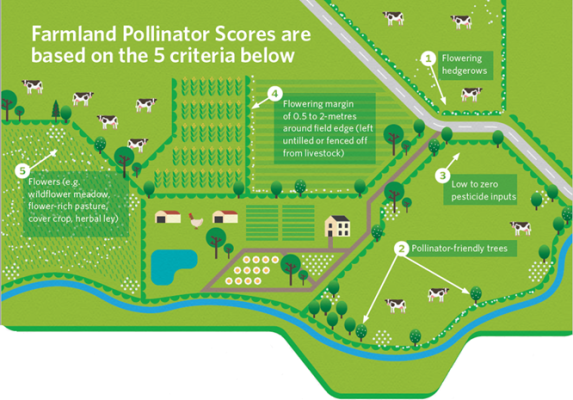
Shane O'Loughlin - protecting the land for the next generation
Kildare dairy farmer, Shane O’Loughlin, is gradually transforming the way he farms. Milking 220 cows at Oghill, Monasterevin he farms 150 acres of his own land and 350ac of rented ground.
Kildare dairy farmer, Shane O’Loughlin, is gradually transforming the way he farms. Milking 220 cows at Oghill, Monasterevin he farms 150 acres of his own land and 350ac of rented ground. Protecting and enhancing biodiversity his high on Shane’s list of priorities as one of 40 Kildare farmers working with the National Biodiversity Data Centre on a project called ‘Protecting Farmland Pollinators’. The initiative aims to improve biodiversity on farms through the provision of food, shelter and safety for pollinators.
Palpably excited and energised by the project, Shane has changed his work practices to make his farm a welcoming place for a diverse range of species with a particular emphasis on bees and insects. Among the most significant changes implemented on the farm was the reduction of internal hedge cutting, “we used to cut them every year and you’d be cutting them fairly tight. Now we are inclined to let them go and cut them every three to five years. It’s very good for the birds and bees,” he said. Allowing hedgerows the space to grow and flourish is an easy way to provide habitats for pollinators and protect the wider ecosystem.

To combat declining bee populations, he has placed a series of isolated bee boxes along the hedges about 1.5ms from the hedge boundary, “these are made from 6” x 4” timbers with holes drilled into the south-facing side, so as to encourage solitary bees to nest,” he explained.
The use of pesticides and herbicides has also been reduced. In particular, Shane avoids spot-spraying thistles and weeds under the electric fences. While allowing these plants to grow might look unsightly, their presence is of enormous benefit to surrounding wildlife. “On every farm, there’s kilometres of hedgerows and kilometres of boundaries between paddocks, once you stop spraying, the amount of butterflies and bees you’d see is amazing,” said Shane, explaining how ‘not doing’ something can make a world of difference.
The planting of mixed species sward that is allowed to flower across 47 acres is among Shane’s key biodiversity actions while a 6 acre patch of wild ground has been of huge benefit to his project. “In years gone by I was being penalised for not doing something with it, advisers were telling me to reclaim it. Now I’m being paid to leave it as it is, it’s a great habitat now.” he said.

The National Biodiversity Data Centre has been monitoring the 40 farms participating in the pollinator project and rating their progress on a scale of 1-5 in a variety of categories. Successes result in a financial reward for the participants. Shane’s hard work is reflected in his scores, which include a ‘3’ on the growth of grass and wildflowers in gateways and field margins. Meanwhile, the planting of 200 pollinator friendly trees earned the farm a perfect score of ‘5’ in that category.
He believes that farmers do a huge amount that can be classified as conservation work and don’t get recognition for it, “There’s a lot of stuff that farmers are doing already without even realising they’re doing it,” he said, “there’s so much going on in farms already but they’re not getting credit for it."
His passion for the biodiversity project largely stems from Shane’s wish to pass his farm on to his children. Like the vast majority of farmers he takes his stewardship of the land very seriously and wants to ensure those coming after him will inherit the place in top condition, “Every farmer wants to leave it [the farm] to the next generation, if you don’t look after it, it won’t be there,” he said.
For more information on EIP click here:
